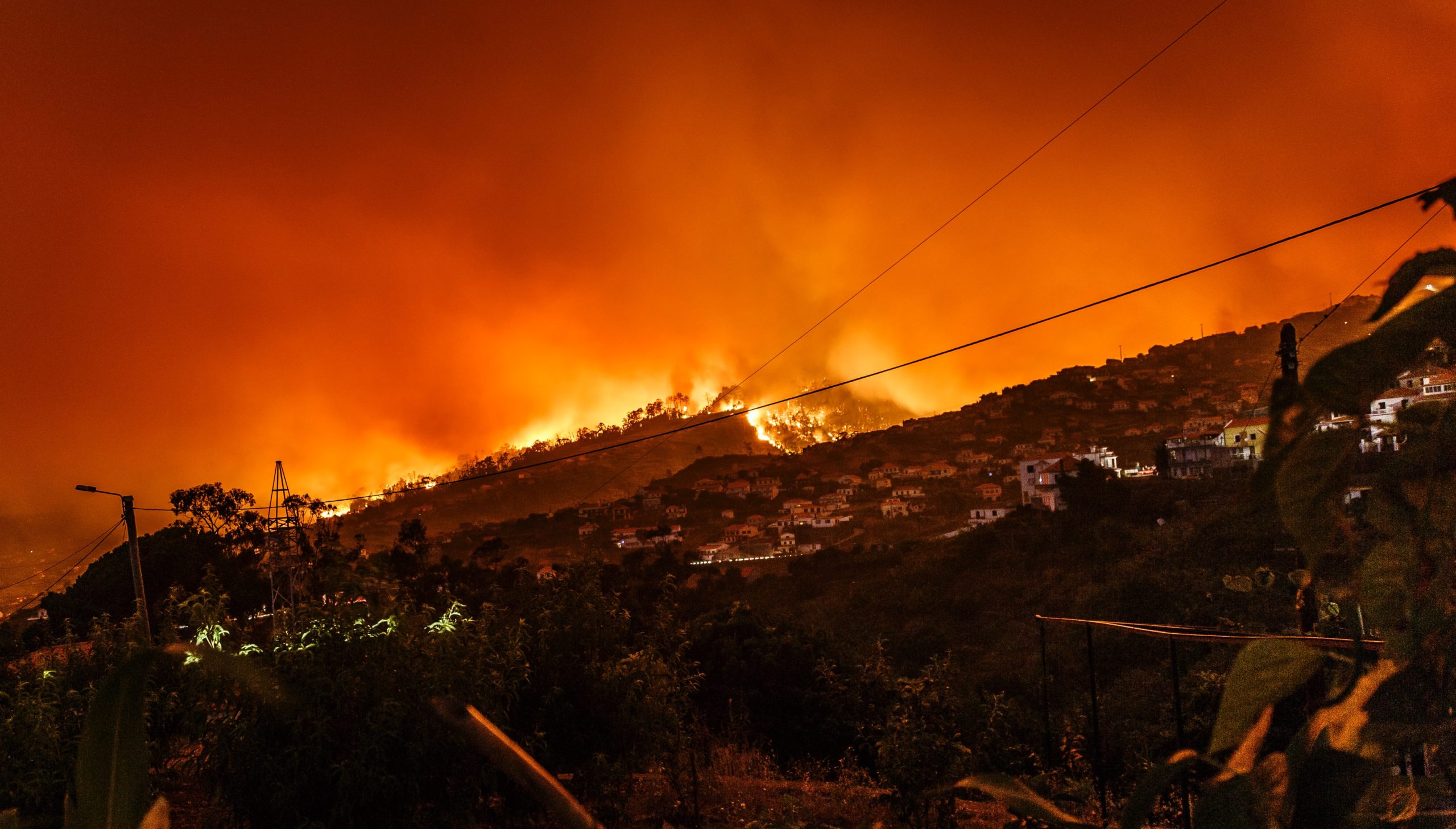

Last year at our Planet Home 2019 event, artists Zach Dragovich and Lester Carrol (who are part of our Design Science Studio) created an emotional, immersive experience to raise awareness about wildfires. The installation, titled “Through the Ashes,” used 100% recycled or upcycled materials to recreate an intimate experience of how a wildfire could affect one’s life, inspired by 2019’s northern California wildfires and informed by Carrol’s personal experience of losing his childhood home.
A year later in 2020, a record-breaking number of wildfires blazed across the western United States. In Colorado, the Pine Gulch Fire became the second-largest wildfire in the state’s history, burning about 125,000 acres. In California, where the wildfire season grows increasingly worrisome each year, NASA recorded over 1 million acres burned as a result of the dangerous combination of increasing temperatures, strong winds, and unprecedented lightning storms.
Wildfires are a symptom of several challenges faced by our planet. They remind us why it is important to understand the environmental factors that cause them, so we can put the necessary solutions in place to prevent future fires.
The combination of high temperatures and dry atmospheric conditions is one of the major causes behind wildfires. The summer of 2020 was expected to be the hottest on record in California, in addition to droughts likely lasting through September. Naturally occurring wildfires create flammable fuel out of dried vegetation. When lightning sparks it aflame, winds spread fires spread quickly, far and wide.
Lightning is the main natural cause of wildfires, and increased lightning is caused by warming temperatures that result in more frequent thunderstorms. Global temperatures are warming each year, with the past five years being the hottest ever recorded. Rising temperatures are the result of increasing greenhouse gas emissions from human activity, especially the burning of fossil fuels and non-regenerative agricultural practices.
The results of rising temperatures came to life this summer when massive volumes of lightning strikes hit the Bay Area. The incident, now being called the “Lightning Seige of 2020,” resulted in an estimated 12,000 lighting strikes caused nearly 600 ignitions.
Needless to say that wildfires threaten human life regarding the potential loss of life and property. But, the resulting smoke is also a major health hazard. Long-term exposure to the soot particles from the smoke is linked to higher rates of heart and respiratory issues. Even if you don’t live in an area that is often directly affected by wildfires, smoke can travel thousands of miles and impact communities far and wide.
In addition to air pollution, wildfires also threaten the health of our water supplies. The destruction of nature also leads to soil erosion, which increases the chances of dangerous mudslides.
Wildfires also harm our atmospheric conditions by releasing increased amounts of carbon emissions into the air. Carbon stored in trees and the soil gets released into the air when burned. Then, the loss of trees makes it harder to offset our own carbon emissions because of the way trees and other vegetation pull carbon dioxide from the atmosphere and release oxygen.
So, what can be done to help prevent wildfires or offset their impact? Indigenous peoples have a solution. As the original stewards of the land, Indigenous people have a wealth of ancestral knowledge about how to best live in harmony with nature. Native Americans are continuing the practice of organized burning, a traditional technique that started as early as a millennia ago. The process involves intentionally burning a section of land in a controlled manner, to clear away excess vegetation and reduce the risk of natural wildfires.
The Yurok, California’s largest Native tribe, works with Cal Fire and the Nature Conservancy to conduct annual burns. Margo Robbins, a member of the Yurok, told the New York Times that her people’s cultural burning practices are very similar to that of the Aboriginal burning strategies used in Australia. Research has shown that the Aboriginal burning program has cut down wildfires by and 50% and reduced carbon emissions by more than 40%.
But, as Dragovich mentioned in the video above, there isn’t just one solution to wildfires. At “Through the Ashes,” Dragovich and Carrol partnered with the Nature Conservancy to promote a program that would plant a billion trees. Planting trees is a direct action we can take to offset the deforestation and carbon emissions caused by wildfires.
You can support the work of the Nature Conservancy by making a charitable donation or volunteering at their events. You can also support the Rainforest Alliance, an international non-profit organization that works to protect forests and improve the livelihoods of farmers and communities most affected by forest fires. Finally, you can help one tree at a time by planting a tree in your local community!
Wildfires are a daunting challenge that we face as a collective. But, if all work together to put these solutions into action, we can protect our Planet Home and rise from the ashes.
MIT. Three letters that conjure images of gleaming labs, Nobel laureates, and world-altering breakthroughs. But…
The accelerating evolution of artificial intelligence (AI) has ignited a global discourse on its potential…
The sun doesn't always shine. The wind doesn't always blow. But the waves? Theycrash against…
For decades, entertainment and retail have operated on a linear model: extract resources, create a…
We have a plastic problem. A big one. It's in our oceans, forming grotesque gyres…
You haven't heard of DataEnergy yet. And that's by design. But in the hushed corners…